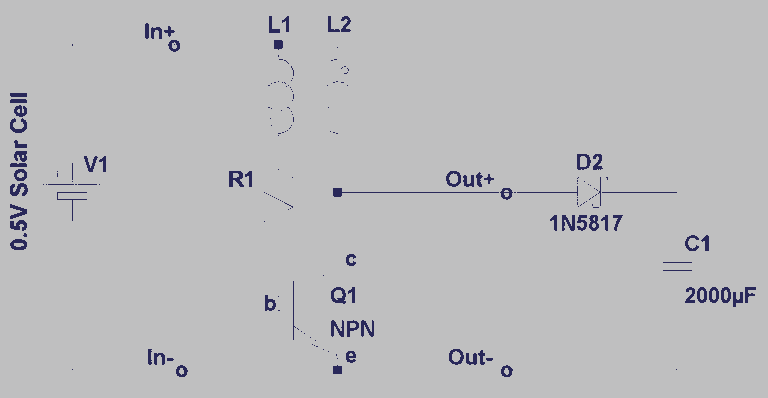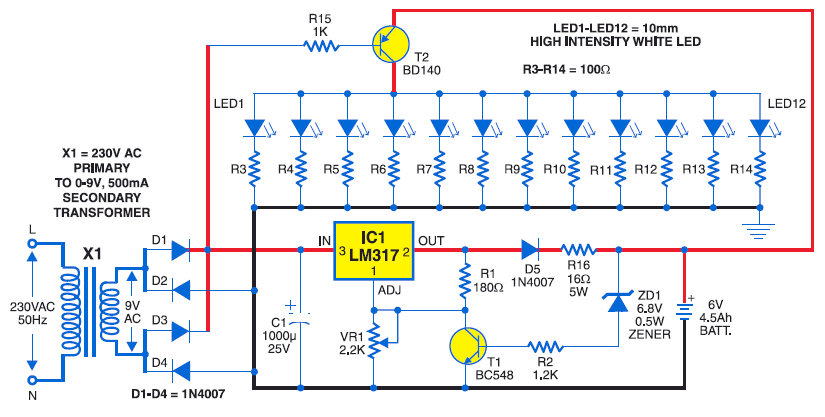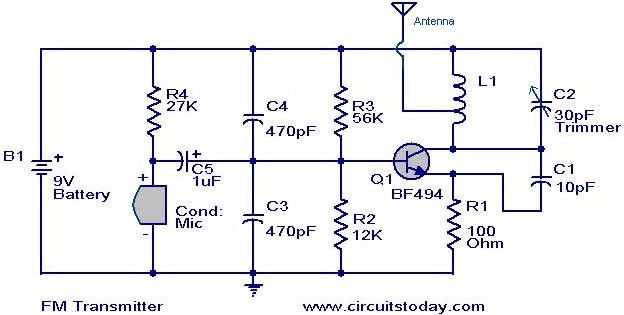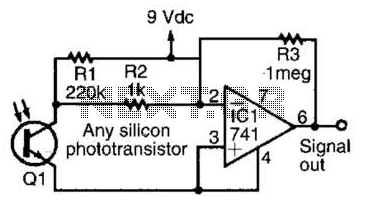
Solar Joule Thief Circuit Project

A steam engine-powered carousel project that utilizes the Joule Thief circuit.
This project combines the classic charm of a steam engine with the innovative Joule Thief circuit, creating a unique carousel that operates efficiently. The steam engine serves as the primary source of mechanical power, driving the carousel's rotation. The Joule Thief circuit, a simple boost converter, is employed to extract energy from low-voltage sources, such as depleted batteries or small solar cells, to power the lighting or electronic components of the carousel.
The steam engine consists of a boiler, a piston, and a flywheel, which converts steam pressure into mechanical motion. The carousel itself is mounted on a rotating platform, which can be designed to accommodate various decorative elements and figures that move in synchronization with the rotation.
The Joule Thief circuit typically includes a transistor, a resistor, a coil, and a diode. This circuit is capable of boosting voltages from a low level (as low as 0.9 volts) to a higher level suitable for powering LEDs or other small devices. When the Joule Thief is integrated into the carousel project, it allows for the efficient use of energy harvested from the steam engine's operation or from alternative power sources, ensuring that the lighting remains vibrant without draining the primary power supply.
In summary, this steam engine-powered carousel project not only showcases mechanical ingenuity but also incorporates modern electronic principles to enhance its functionality and sustainability. The combination of traditional steam power with the Joule Thief circuit exemplifies a creative approach to energy use in miniature engineering projects.A Very Nice Steam Engine Powered Carousel Project That Uses The Joule Thief. 🔗 External reference
This project combines the classic charm of a steam engine with the innovative Joule Thief circuit, creating a unique carousel that operates efficiently. The steam engine serves as the primary source of mechanical power, driving the carousel's rotation. The Joule Thief circuit, a simple boost converter, is employed to extract energy from low-voltage sources, such as depleted batteries or small solar cells, to power the lighting or electronic components of the carousel.
The steam engine consists of a boiler, a piston, and a flywheel, which converts steam pressure into mechanical motion. The carousel itself is mounted on a rotating platform, which can be designed to accommodate various decorative elements and figures that move in synchronization with the rotation.
The Joule Thief circuit typically includes a transistor, a resistor, a coil, and a diode. This circuit is capable of boosting voltages from a low level (as low as 0.9 volts) to a higher level suitable for powering LEDs or other small devices. When the Joule Thief is integrated into the carousel project, it allows for the efficient use of energy harvested from the steam engine's operation or from alternative power sources, ensuring that the lighting remains vibrant without draining the primary power supply.
In summary, this steam engine-powered carousel project not only showcases mechanical ingenuity but also incorporates modern electronic principles to enhance its functionality and sustainability. The combination of traditional steam power with the Joule Thief circuit exemplifies a creative approach to energy use in miniature engineering projects.A Very Nice Steam Engine Powered Carousel Project That Uses The Joule Thief. 🔗 External reference





